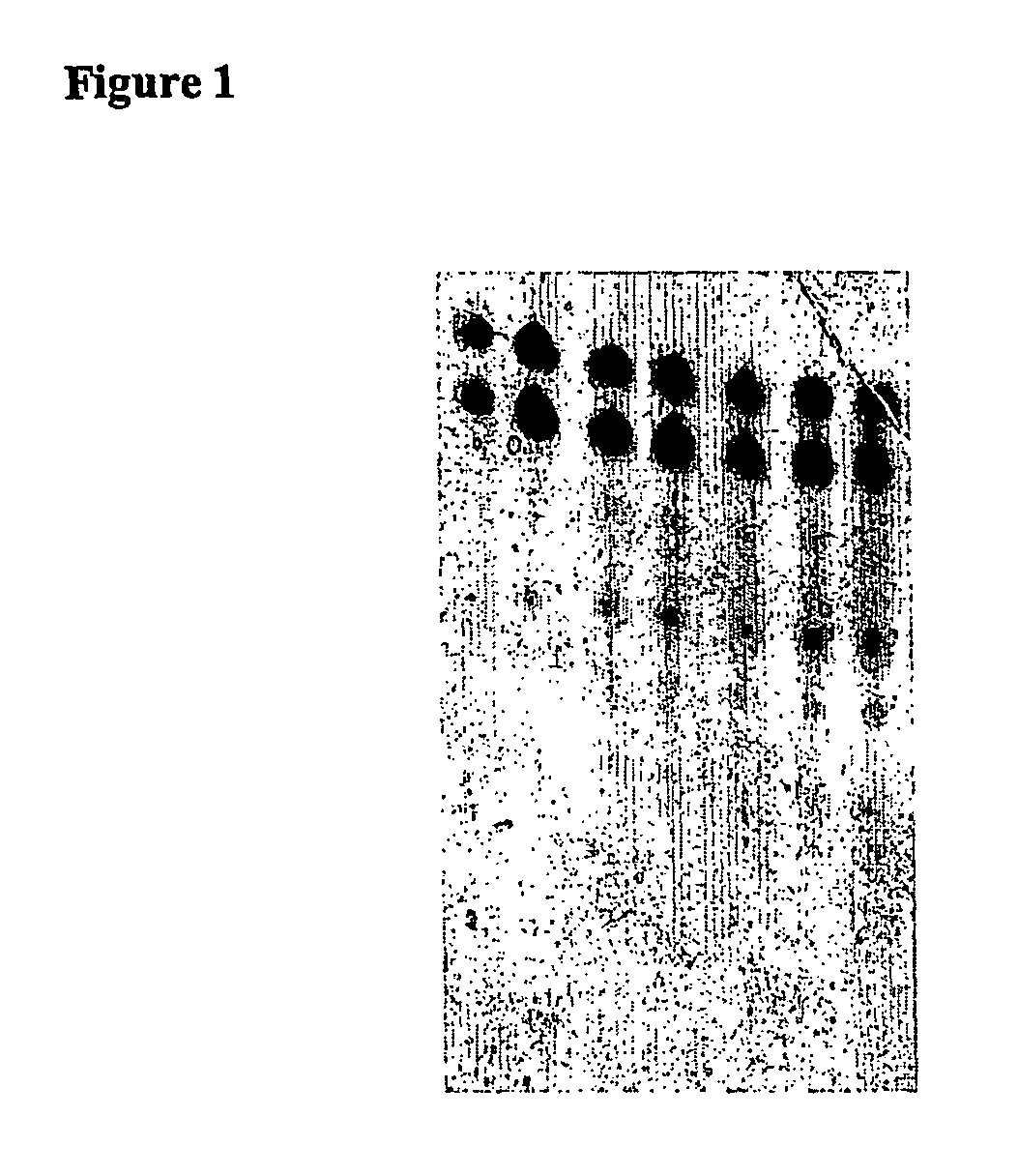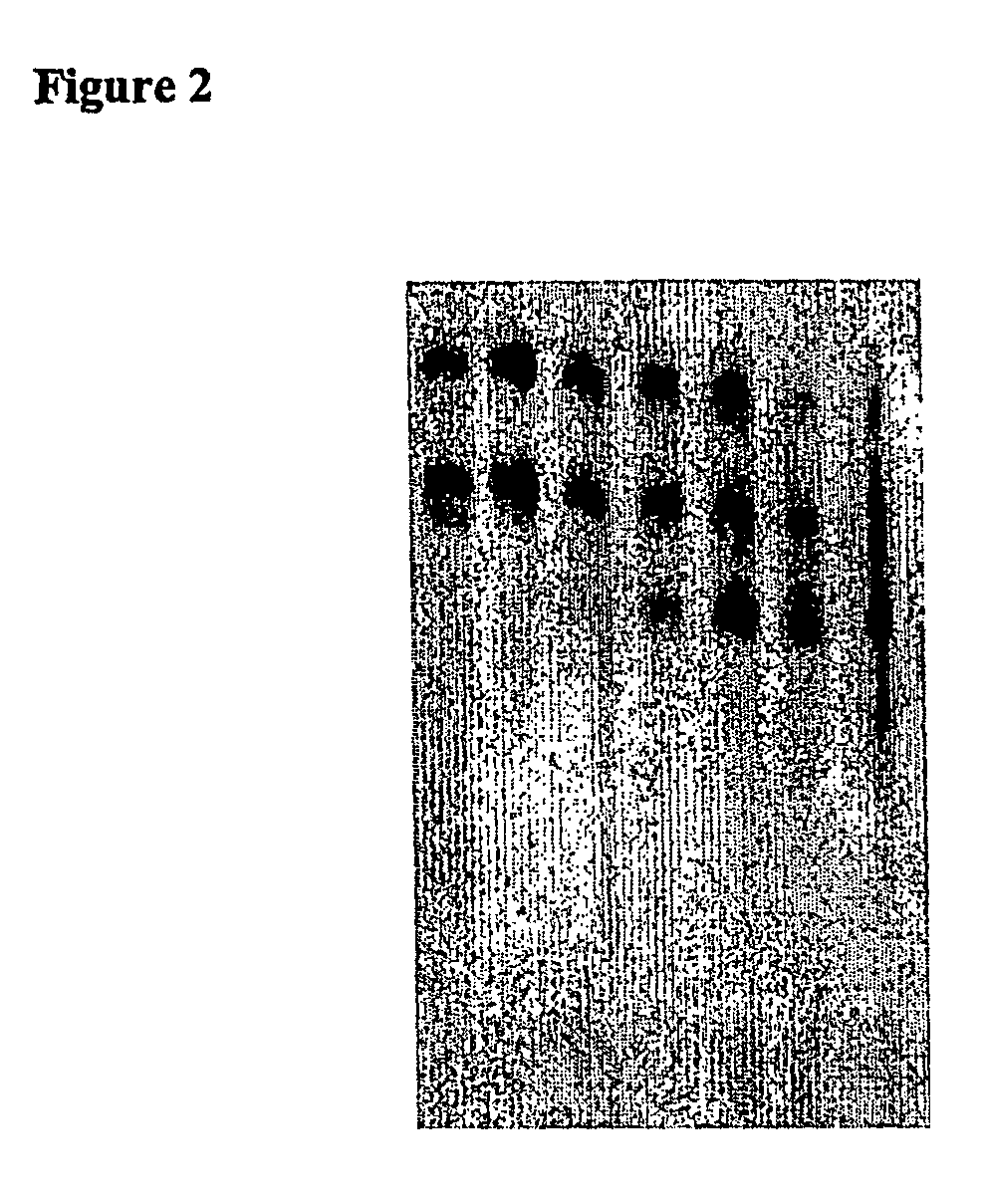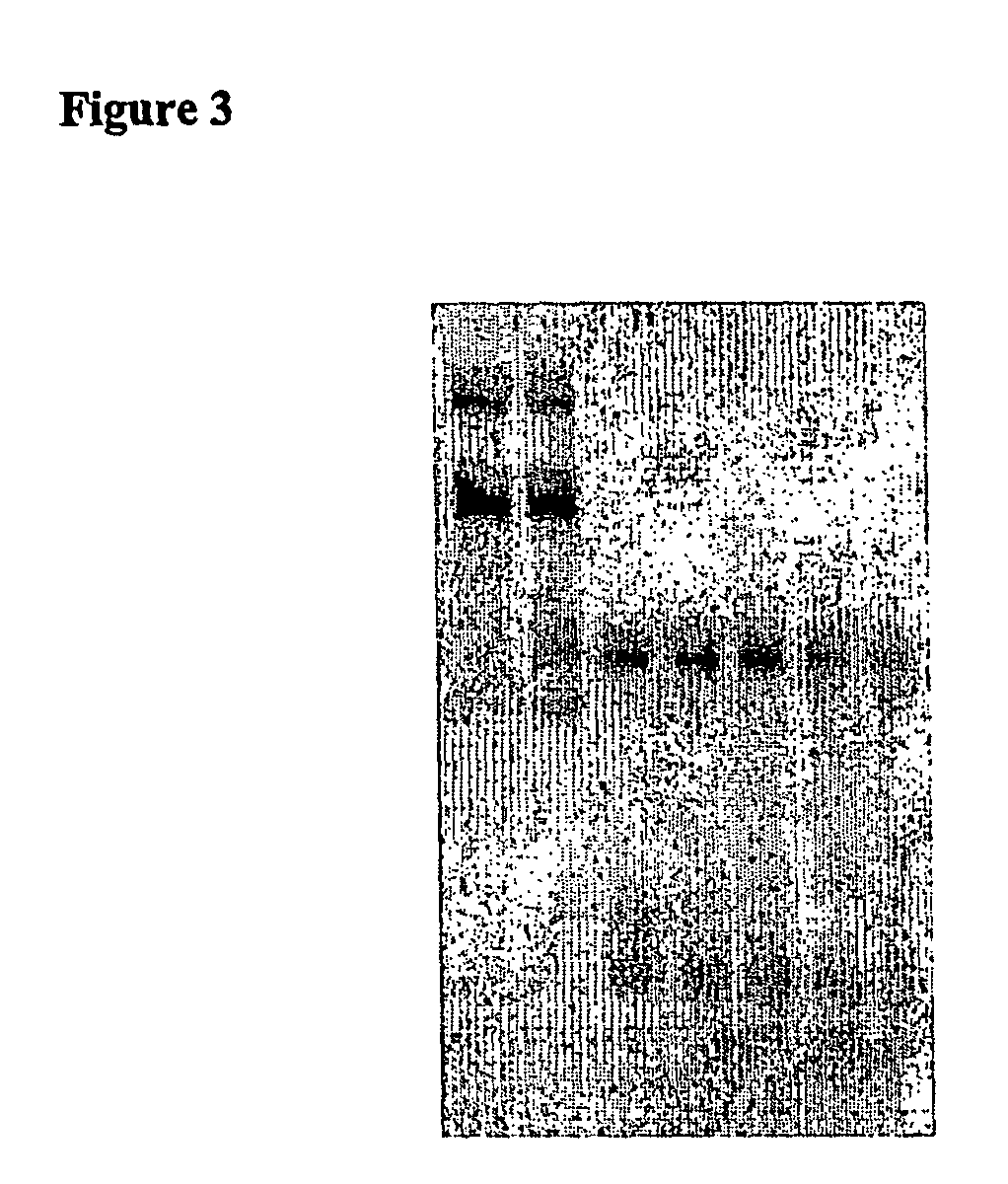Double-stranded ribonucleic acid with increased effectiveness in an organism
a technology of double-stranded ribonucleic acid and increased effectiveness, which is applied in the direction of drug compositions, extracellular fluid disorders, immunological disorders, etc., can solve the problems of insufficient means for stabilizing dsrna against degradation, low efficacy, and insufficient stability of rna in some bodily fluids, so as to inhibit the expression of a target gene, improve stability, and improve stability
- Summary
- Abstract
- Description
- Claims
- Application Information
AI Technical Summary
Benefits of technology
Problems solved by technology
Method used
Image
Examples
example 1
RNA Synthesis
[0355]Single-stranded RNAs were produced by solid phase synthesis using an Expedite 8909 synthesizer (Applied Biosystems, Applera Deutschland GmbH, Frankfurter Str. 129b, 64293 Darmstadt, Germany). Other standard ribonucleoside phosphoramidites and nucleosides immobilized on CPG (controlled pore glass), a porous support material, were obtained from ChemGenes Corp. (Ashland Technology Center, 200 Horner Ave., Ashland, Mass. 01721), or from Proliga Biochemie GmbH (Georg Hyken Str. 14, Hamburg, Germany). Other synthesis reagents were obtained from the Mallinckrodt Baker Co. (Im Leuschnerpark 4, 64347 Griesheim, Germany). Raw synthesis products were purified with HPLC (System Gold, Beckman Coulter GmbH, 85702 Unterschleissheim, Germany) using an anion exchange column (DNAPac PA 100, Dionex GmbH, Am Wörtzgarten 10, 65510 Idstein). The achieved yield was determined by means of UV light absorption at 260 nm.
[0356]The RNAs used in the study were produced by heating equimolar qu...
example 2
Extraction of Human Serum
[0357]For coagulation, a blood sample was immediately incubated in a darkened collecting tube (SST Vacutainer 9.5 mL; BD Vacutainer Systems, Becton Dickinson & Co., Belliver Industrial Estate, Plymouth PL6 7BP, Great Britain) for 2 hours at 20° C. After that, serum was separated as supernatant fluid from agglutinated blood in a centrifuge at 4° C. and 3000×g for 15 minutes (Megafuge 1.0; Heraeus Instruments, Kendro Laboratory Products, 37520 Osterode, Germany), transferred to sterile 1.5 mL reagent vessels (La Fontaine, International GmbH & Co. KG, Daimlerstr. 14, 68753 Waghäusel, Germany), and stored at −20° C.
example 3
Incubation of dsRNA with Serum
[0358]60 μl serum were placed on ice in each of 1.5 mL reagent vessels. Subsequently, 12 μl of a 25 μM dsRNA solution was added to each and mixed thoroughly for 5 seconds using a Vortex Genie2 (Scientific Industries, Inc., Bohemia, N.Y. 11716). The dsRNA concentration was 4.16 μM in a volume of 72 μl. The samples were then incubated in a heat block at 37° C. for 15, 30, 60, 120, and 240 minutes, and then immediately flash frozen in liquid nitrogen. One sample was flash frozen in nitrogen without incubation at 37° C. immediately after dsRNA was added to the serum. The samples were stored at −80° C.
PUM
| Property | Measurement | Unit |
|---|---|---|
| concentrations | aaaaa | aaaaa |
| diameter | aaaaa | aaaaa |
| diameter | aaaaa | aaaaa |
Abstract
Description
Claims
Application Information
 Login to View More
Login to View More - R&D
- Intellectual Property
- Life Sciences
- Materials
- Tech Scout
- Unparalleled Data Quality
- Higher Quality Content
- 60% Fewer Hallucinations
Browse by: Latest US Patents, China's latest patents, Technical Efficacy Thesaurus, Application Domain, Technology Topic, Popular Technical Reports.
© 2025 PatSnap. All rights reserved.Legal|Privacy policy|Modern Slavery Act Transparency Statement|Sitemap|About US| Contact US: help@patsnap.com



